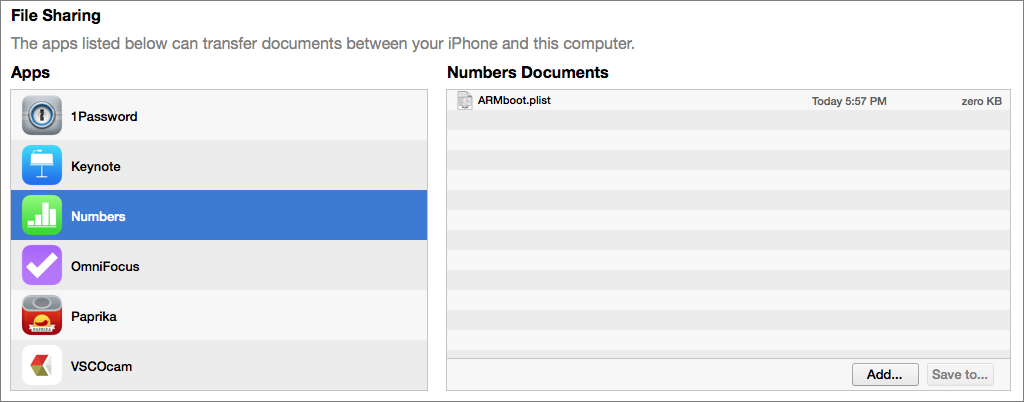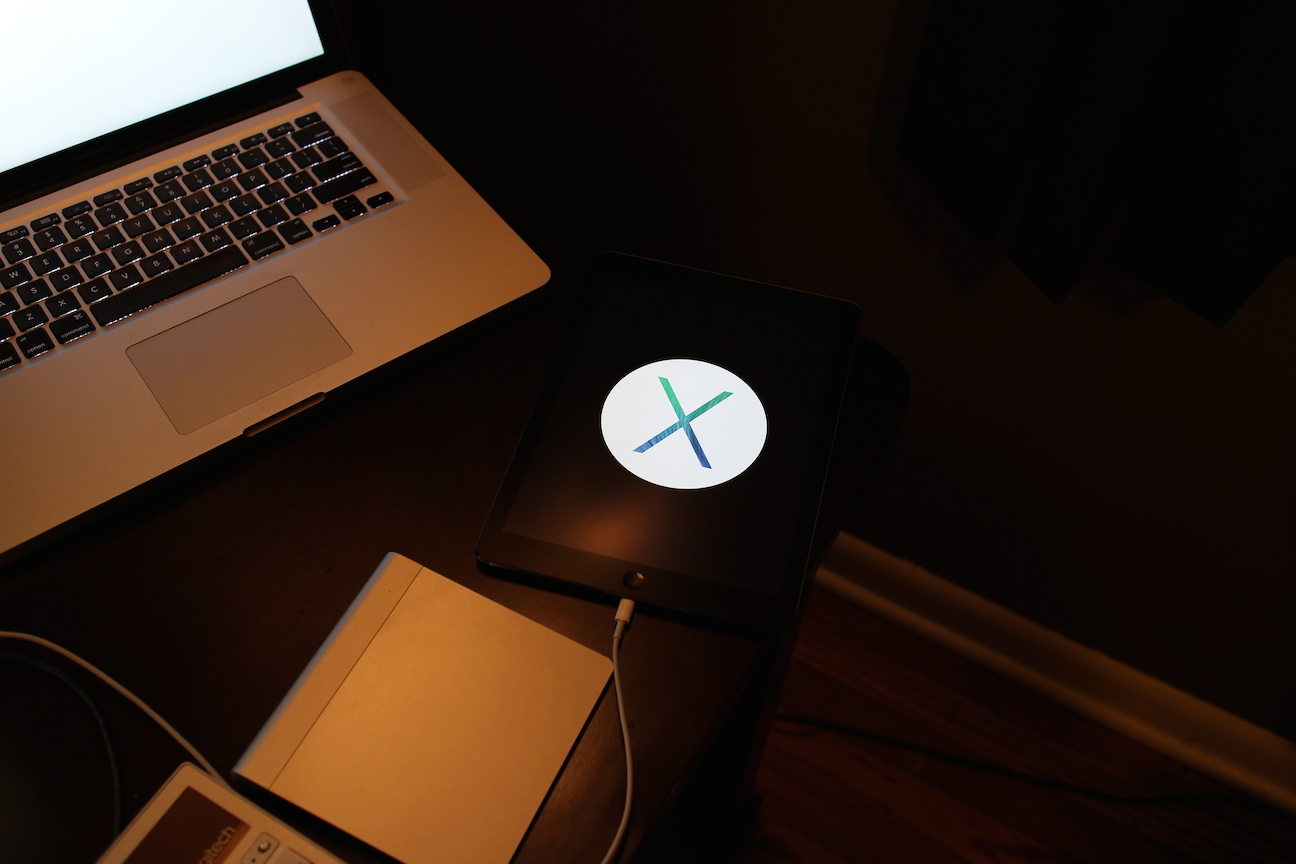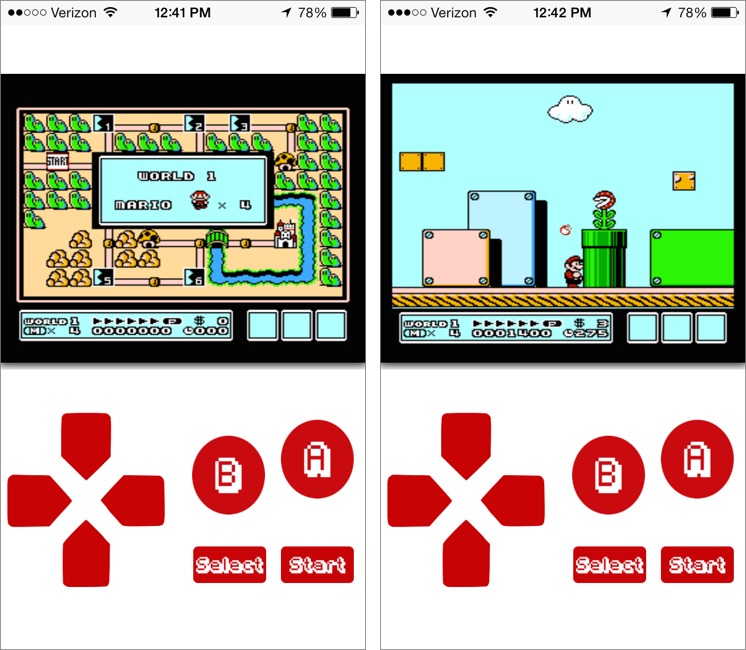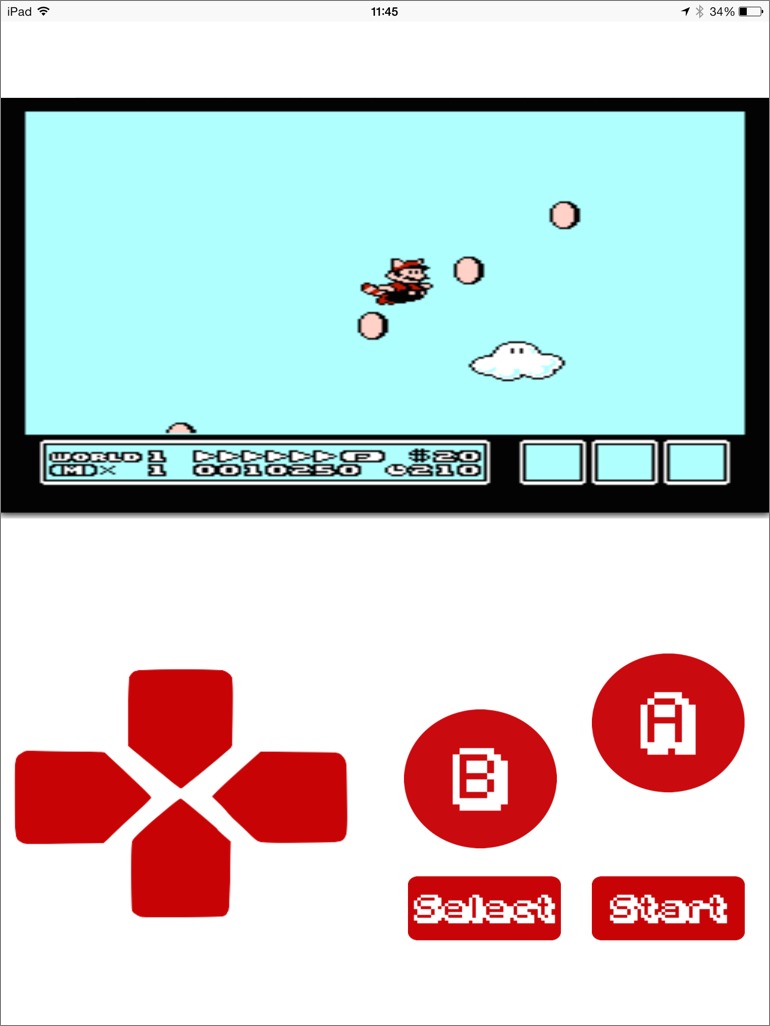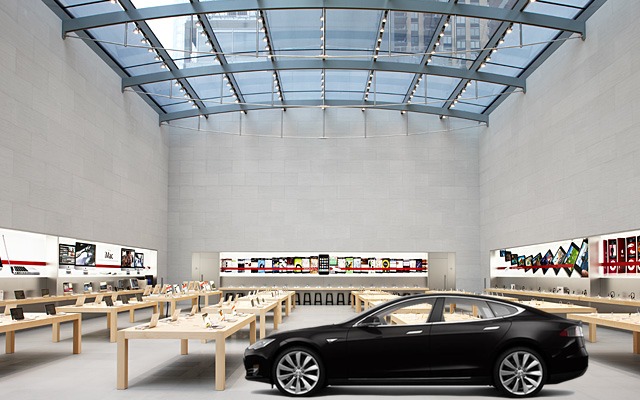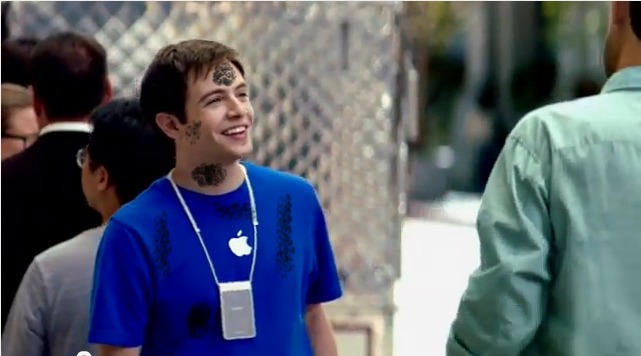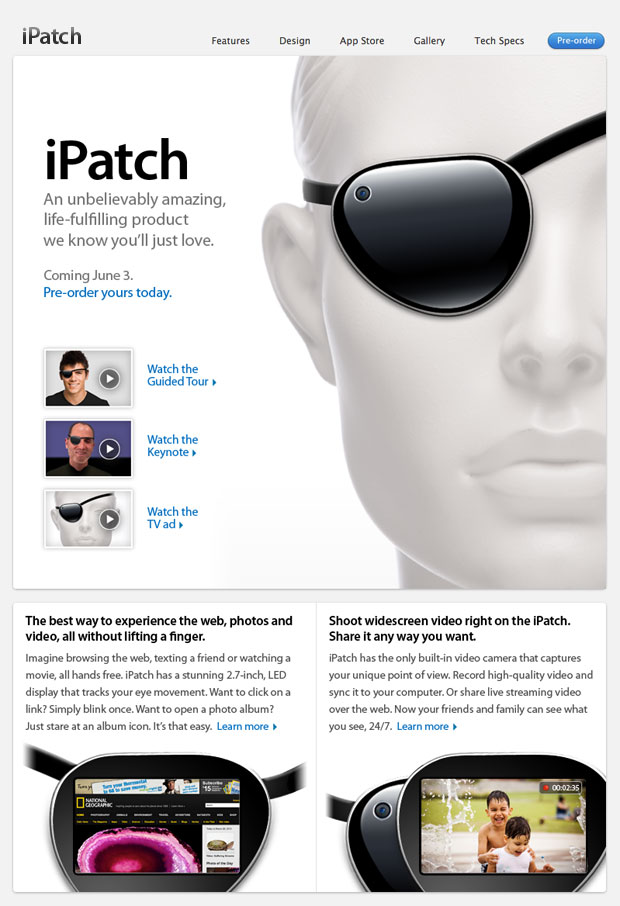TidBITS#1217/01-Apr-2014
The NSA figures heavily in this week’s news, with documents from former contractor Edward Snowden revealing that the security agency is in hot water with the Recording Industry Association of America over illicit copies of music and is also working to address limitations in telephone metadata gathering by partnering with a mobile virtual network operator. But Snowden’s documents aren’t related to the other big NSA news story — a dustup with Comcast over bandwidth throttling. Back in the real world, we explain how to install Mavericks on an iPad Air (don’t get your hopes up, it’s not particularly usable) and explain why Apple’s much-rumored iCar may never see the light of day. Finally, Josh Centers takes a look in FunBITS at Nintendo’s iOS adaption of the venerable Super Mario Bros. 3 — can it possibly live up to its reputation? Notable software releases today include Firefox 104, Mac Pro ATS Update 1.0, Pages 5.1.1, and Jamiroquai 5.2.143.78.1.
RIAA to Sue NSA over Illicit Media Copies
When it comes to the information leaked by former NSA contractor Edward Snowden about the security agency’s activities, the hits just keep on coming. Ironically, this time the hits are recorded: among the kinds of data captured and stored on NSA servers are terabytes of digital music and other digital media acquired through an NSA operation, dubbed “RAINBOWPIZZA,” that was designed to trace possible terrorist money-laundering via pirate media sites.
The latest spin on the spy agency’s activities may prove to be a thorn in the side of both the NSA and, surprisingly, Apple: apparently, many NSA employees and contractors have taken advantage of the archive of confiscated media, dipping into it to populate their own personal media collections, making the NSA a possible accessory in copyright infringement. At least, that is the way the Recording Industry Association of America reads the situation, according to RIAA spokesperson Ricard Roltz, who said, “A preliminary audit of the revealed archive holdings suggests that the NSA may hold the largest collection of pirated media ever found, with an estimated
32 million songs and 3 million commercial videos.” In his statement, Roltz noted that RIAA legal counsel has begun preparing for legal action, and did not rule out the possibility of a lawsuit targeting the agency itself, noting that “Even the federal government must adhere to laws of the land.”
What makes this concerning for Apple is that, based on the samples examined in the course of the audit, less than a third of the media appeared to originate from Apple’s iTunes Music Store, even though Apple claims to have almost twice as many songs available as its closest competitor, Amazon. 26 million songs were said to be available in the iTunes Music Store as of late 2012, the last time Apple released statistics about its music holdings, compared to the 14.8 million songs available from Amazon (reported in early 2013). If these statistics hold up when the archive is more thoroughly examined, it would suggest that Apple is rapidly losing market share among the most active and vociferous segment of music fans to its competitors.
Or, more positively, that fewer Apple users choose to share illicitly copied music.
In any case, RIAA will face tough legal sledding in its attempt to bring the NSA to justice. One issue is whether the NSA can be held to be a contributing infringer or whether the suit will have to be restricted to the actual employees and contractors involved. Sources say that RIAA is preparing to subpoena the media devices of an unspecified number of John Doe defendants, but those subpoenas are themselves problematic, as the identities of their targets are classified.
Are Comcast and the NSA Locking Horns over Bandwidth?
Social media and privacy watchdog sites erupted today following a series of tweets implying that one or more high-level Comcast executives had been hurriedly called to Washington, D.C. to meet with U.S. government officials. The messages seemed to indicate that leadership of the cable giant would be meeting with officials of the National Security Agency, perhaps in regard to Comcast’s reported practice of limiting or even degrading network performance for certain third parties.
The three tweets were posted on 1 April 2014 just after 1:30 AM Eastern Daylight Time, and have the tone of private “direct” messages that may have accidentally been posted publicly.
@JustACableGuy: Summoned to DC to meet with Rogrs ppl, at least they knew we don’t fly coach
@JustACableGuy: bc the internet is free like shipping and handling are free, lol. spcl needs mean spcl arrangements
@JustACableGuy: what can I say, capping works
The individual tweets were deleted within a few minutes, but were preserved as screenshots by sharp-eyed followers. The @JustACableGuy account was deleted entirely within the next half hour.
Online speculation centered on whether “Rogrs” referred to Vice Admiral Michael S. Rogers, currently being confirmed by the U.S. Senate as the new head of the NSA (see “Keeping Up with the Snoops 4: When the Going Gets Weird…,” 13 March 2014). Other discussions focused on the word “capping” and whether it referred to Comcast’s long-standing practice of limiting customers’ monthly Internet usage, or its more controversial reported practice of throttling high bandwidth services on its network unless operators make special arrangements with the company. Video streaming operator Netflix recently entered into an agreement to pay Comcast for preferred access to its network, although financial terms of the deal were not disclosed.
The owner of the now-deleted @JustACableGuy Twitter account is unknown — the account was not verified and its profile information never identified an individual or corporation. The account had followed a range of news outlets and individual technology journalists, and several technology writers have privately acknowledged receipt of seemingly well-informed direct messages from the account on matters concerning Comcast since late 2012. I received two such messages following “Comcast Makes $45 Billion Bid for Time Warner Cable” (18 February 2014).
Revelations of extensive government surveillance of Internet communications have so far generally indicated the NSA and other agencies have preferred to target service providers like Facebook, Google, Apple, and Microsoft rather than network operators like Comcast. However, Comcast is the United States’ largest Internet provider with nearly 21 million broadband subscribers at the end of 2013.
Comcast and other network operators must comply with disclosure orders from the still-secret Foreign Intelligence Surveillance Court. However, that doesn’t mean they work for free. U.S. law permits network operators to charge for reimbursement and “reasonable expenses” for complying with government surveillance demands, including FISA orders. Documents released by Edward Snowden claim intelligence agencies paid millions of dollars to companies complying with the PRISM data collection program; Verizon and other network operators have acknowledged receiving millions in taxpayer dollars for enabling bulk data collection of telephone records. Comcast also offers voice services.
If the deleted tweets reflect current interactions between Comcast and the NSA, they suggest Comcast may be intentionally limiting network performance for those government operations. That would put Comcast in the ironic position of being roundly criticized for stepping around net neutrality principles, but potentially helping to protect its customers’ privacy by limiting the government’s bulk data collection capabilities.
Despite details from the Snowden revelations, the full extent of U.S. government surveillance and bulk data collection is still unknown. However, data collection has been underway for some time, and the Obama administration does not seem inclined to scale back the efforts, even if the ongoing controversy may spark limited oversight reforms.
If Comcast executives have been summoned to Washington to meet with intelligence officials, it may simply indicate Comcast is being pragmatic. If government data requirements are extensive and likely to increase with no end in sight, Comcast may have decided to treat the intelligence community the same way it would treat any other high-bandwidth service like Netflix that wants to access its network: as a source of revenue.
Install and Run OS X 10.9 Mavericks on the iPad Air
Pundits have long speculated that Apple is working on ARM-based builds of Mac OS X that would allow the company to use its proprietary A7 CPU (or successors) in Macs as well as iOS devices. This is nothing new for Apple, which secretly compiled Mac OS X for Intel-based hardware for years while Macs shipped with PowerPC CPUs.
But we hadn’t realized how far this work had come until a source inside Apple tipped us off to the fact that Apple is testing OS X 10.9 Mavericks on current iPad hardware. Not only that, but the ARM code is embedded in the shipping version of Mavericks. After months of attempts, we’ve cracked how to install and run Mavericks on the iPad Air.
It goes without saying that this is a total hack, and several caveats apply:
- The code works only on the iPad Air. Earlier models are not supported, nor is the latest iPad mini, even though it has nearly identical internals.
- It completely replaces iOS on your iPad Air and wipes your existing data. To remove Mavericks and go back to iOS, you must put your iPad into Recovery Mode and restore through iTunes. If you’re not familiar with that process, don’t even think about trying these steps.
- Almost nothing works. As with the move from PowerPC- to Intel-based CPUs, a Rosetta-like translation layer will be necessary for existing third-party apps to function, and it’s still missing. The only apps that work are those for which Apple has produced fat binaries: we’ve identified Finder, Terminal, Activity Monitor, Disk Utility, and Console so far.
With all that in mind, let’s install Mavericks and get it going.
First, download OS X Mavericks (5.3 GB) from the App Store, if you don’t already have a copy of the installer in your Applications folder from a previous install.
While it downloads, install Numbers and Keynote on your iPad Air, if they’re not already installed.
Also while you wait, create a plain text file in your favorite editor on the Mac, containing just the following line:
load InstallESD.dmg OSXARM
Save that as MacInstall.plist on the Desktop. Then create another text file with this line:
boot InstallESD.dmg
Save that as ARMboot.plist on the Desktop as well.
Once the Mavericks installer has downloaded, connect your iPad Air to your Mac via a Lightning cable and open iTunes. Now would be a good time to perform a backup of the iPad, if you haven’t already, so you can later revert to iOS.
In iTunes, select your iPad in the sidebar, click the Apps button, and scroll down to the File Sharing section. Next, select Numbers and drag ARMboot.plist into the Numbers Documents list. Finally, select Keynote and drag MacInstall.plist into the Keynote Documents list.
When all the files have been copied, click Sync in the lower right, wait for it to finish, and then eject the iPad and disconnect it from your Mac.
Before proceeding, make sure you have a Bluetooth keyboard and trackpad set to pairing mode. Touch doesn’t yet work in Mavericks, but the operating system will look for Bluetooth devices to pair with when it first boots. You can also use the Lightning to USB Camera Adapter ($29) and a USB hub to connect a USB keyboard and mouse, which may be less finicky.
Now, turn off your iPad by holding the Sleep/Wake button down for a few seconds. Once it’s off, make sure iTunes is still running, reconnect the iPad to your Mac via USB, then press and hold the Sleep/Wake and Home buttons simultaneously to turn the iPad back on to start the installation process. You’ll know it’s working when you see a black screen with the Mavericks logo.
Once the iPad boots in ARM mode, iTunes launches the Mavericks installer on the Mac, and makes the iPad available as a destination disk. The installation process is the same as it would be on a Mac, and when it’s done, your iPad will boot into Mac OS X and work just like a tiny Mac. Enjoy playing with OS X on your iPad, at least to the extent that’s possible today!
The Future of the Mac? — What does this mean for the Mac’s future? Apple is obviously working on ARM test builds of Mac OS X alongside the Intel versions, but that doesn’t necessarily mean that the Mac will move to Apple’s A7 CPU any time soon. We know that Apple built Intel versions of Mac OS X for years before making the switch away from PowerPC-based CPUs. These ARM builds could be merely a proof of concept, they could be Apple hedging its bets, or they could even be a bargaining chip with Intel to keep CPU prices down.
If the Mac does switch to the A7 or a later version of that chip, the chief advantage would be battery life. Imagine a MacBook Air that could run for 24 hours or more before needing a charge! And it would seem likely that Apple could reduce costs (and prices) by doing so — the estimated costs of the A7 are under $20, whereas the Intel Core i5 chip in the MacBook Air cost $342 at release). But the drawbacks could be severe: less processing power (at least for now), presumably no more Boot Camp, and once again, developers would have to jump from one
architecture to another, even with a Rosetta-like translation layer to ease the transition. If Apple could get enough CPU power into a future A-series chip, though, it’s easy to see the company making yet another architecture jump at some point.
NSA to Sponsor Low Cost Mobile Phone Plan
iPhone users have long thought that Apple should buy a cellular carrier and disrupt the industry’s usurious contracts by changing the business model. But it looks like the most significant challenge to the cellular industry’s status quo may come from an unexpected source: the U.S. National Security Agency. That’s right, the NSA is getting into the cell carrier business. And you can imagine why.
Of course, the NSA isn’t being quite so blunt about it, but rumors have started circulating about a new mobile virtual network operator called ASN that promises to compete with entrenched cellular carriers by offering a contract-free plan that includes data at $10 per GB, voice calls to anywhere in the world for a flat rate of 1¢ per minute, and entirely free SMS text messaging.
A mobile virtual network operator, or MVNO, is a company that essentially leases the right to provide network services over an existing carrier’s infrastructure, purchasing bulk access at wholesale rates and then reselling them independently. There are hundreds of MVNOs worldwide; Virgin Mobile became the first MVNO in the United States before eventually being acquired by its host mobile network operator, Sprint Nextel, in 2009.
ASN will be unusual, the rumors suggest, in that it will work with multiple GSM carriers to provide significantly broader coverage than most MVNOs, particularly worldwide. Couple that coverage with compelling prices, and you can see how ASN might lure massive numbers of customers away from the traditional carriers. After all, it’s difficult to pay less than $80 per month for a smartphone plan with 1 GB of data from a major carrier. But at 1¢ per minute for voice calls, 1,000 minutes would cost only $10, and another $10 for 1 GB of data brings the total cost to only $20, a quarter of what similar service might run from AT&T or Verizon Wireless in the United States.
But what’s the link to the NSA? Newly revealed documents from the collection leaked by former NSA contractor Edward Snowden indicate that the NSA’s wiretapping program wasn’t sufficiently effective, capturing perhaps only 30 percent of voice traffic metadata, due in large part to consumers moving from landlines to mobile phones. To address this gap, an NSA program code-named REACHOUT was developed to integrate NSA data collection capabilities more closely with cellular carriers. Documents confirm that ASN — short for “American
Security Now” — is the key to REACHOUT, designed as it is to attract large numbers of customers, particularly those making international calls.
ASN is intended to be a legal front for the NSA, which used its national security powers to compel cellular carriers (at least in the United States) not just to accept the NSA’s data collection gear but also to sell wholesale network services at a favorable rate. ASN’s relationships with international carriers outside of the other members of the Five Eyes (Australia, Canada, New Zealand, and the United Kingdom) will be subsidized through the NSA’s portion of the so-called “black
budget.”
Although the leaked documents may have outed ASN as a front for the NSA, sources say the NSA may still continue with REACHOUT. ASN will reportedly call its plan the Patriot Plan, and give it the marketing tagline, “Because you have nothing to hide.” Since — according to a 2013 Pew Research poll — 56 percent of Americans say the NSA’s tracking of telephone records is an acceptable way for the government to investigate terrorism, ASN may find plenty of takers for the Patriot Plan among those who are willing to trade some privacy for significantly reduced cell phone bills. Are you among them?
FunBITS: Super Mario Bros. 3 Disappoints on iPad and iPhone
In a surprise move, Nintendo has caved to media and gamer community pressure, and with little fanfare has released one of its classic titles, Super Mario Bros. 3, on the App Store — for both iPad and iPhone ($4.99 each). Naturally, the surprise announcement has put a serious strain on the App Store, so if the listing doesn’t come up right away, just keep refreshing until it finally does. “This is merely a test run, an attempt at broadening our platform,” Nintendo of America President Reggie Fils-Aime said in a statement.
Relying as it does on its hardware business, Nintendo has been understandably reluctant to release its titles outside of its own platforms. However, with the dominance of mobile gaming on iOS, it looks like Nintendo’s hand has been forced. The company could not have picked a better title for its first toe dip into the iOS waters. Super Mario Bros. 3 is one of the most popular video games of all time, selling 18 million copies since its Japanese debut on the Famicom (known as the Nintendo Entertainment System to us Westerners) in 1988. As of 2011, it was still the highest-grossing non-bundled game of all time, grossing $1.7 billion.
For those who have somehow never played Super Mario Bros. 3, it’s a platform game where you travel from world to world, jumping on baddies and collecting coins in a mission to save Princess Toadstool from the evil reptile Bowser, who wants to conquer the Mushroom Kingdom. You play Mario, who starts off “small” but grows larger by eating magic mushrooms (insert drug joke here). Touching an enemy as small Mario means death, but while you’re big Mario, it merely shrinks you back down.
Super Mario Bros. 3 was a landmark game in the series. It was the first to introduce an overworld map. It also introduced a number of different “suits,” as well as the ability to fly. In the original Super Mario Bros., in addition to magic mushrooms, you could pick up fire flowers, which gave big Mario the power to shoot fireballs. Fire flowers are still in Super Mario Bros. 3, but there are also leaves that turn Mario into a flying raccoon; frog suits for water levels; a hammer suit that lets Mario throw hammers; and a special Tanooki suit, which not only lets Mario fly, but also gives him the ability to turn into an invincible, immobile statue.
In addition to all of that, Super Mario Bros. 3 expanded on the idea of a themed world, with entire maps dedicated to water levels, desert levels, pipe maze levels, and levels where everything is super sized. It cannot be overemphasized how revolutionary this all was at the time. It was even a focal point of 1989’s The Wizard and rated its own television ad.
But enough with the introduction — how does iOS version play? Although there are separate versions for the iPad and iPhone, they are practically identical. Nintendo made the odd decision to make the games playable only in portrait orientation, likely to invoke nostalgia for the classic Game Boy. Also, I’m guessing Nintendo wanted the experience to be superior on the company’s own devices. Fair enough, but landscape mode would make it easier to see what you’re doing in the game.
The fact that Nintendo went with an onscreen d-pad is disappointing, though I can’t think of a better way to control Mario. But it makes the game tough to play. You hold B to run and A to jump, and with the onscreen buttons being spread so far apart, that makes things tough. For a game like Mario, where precision is paramount, I had trouble getting past the first level.
Performance is surprisingly poor. The game slows down at bad times, making it a risky proposition to jump on enemies, much less pull off complicated maneuvers like kicking a Koopa Troopa out of its shell and then holding B to pick up the shell.
If I had to choose between the two versions, I would go with the iPhone version. It looks better. The iPad version is identical, but stretched to fit the screen. I can’t believe Nintendo charges another $4.99 for such a lazy adaptation.
While Super Mario Bros. 3 is one of my favorite games of all time, and was a huge part of my childhood, the iOS adaptations are a huge disappointment. These are games designed to be played on a TV, with an actual game controller, not on a smooth touchscreen. Granted, the game plays acceptably on an Apple TV-connected big screen via AirPlay Mirroring, but the iPhone is no replacement for tactile buttons. And the graphics are even worse at television size. Come on, this game is over a quarter-century old, you can do better, Nintendo!
Perhaps if Nintendo wants to continue exploring the iOS market, the best course of action would be to create games designed for the iPad and iPhone. That’s what I’d like to see from Nintendo — new titles, new forms of gameplay, new ideas. Nintendo is at its best not when it’s stuck in the past, but when it blazes a new trail.
7 Reasons Apple’s iCar Is Delayed: Is the iCar Doomed?
According to Goldman Sachs technology analyst Boynton Glick, Apple’s entry into the electric car market has been delayed yet again. As the San Francisco Chronicle reported, Apple merger and acquisitions executive Adrian Perica met with Tesla CEO Elon Musk in 2013 to talk about the possibility of a merger, with the goal of introducing an Apple-branded automobile — the iCar — by late 2014. However, circumstances have delayed Apple’s plans, Glick says, putting the project in jeopardy before the rubber hits the road and accounting for Musk’s latest statement that an Apple-Tesla merger is “very unlikely.” Here then are the 7 reasons why Apple’s iCar efforts are stalling.
1: They don’t fit in Apple Stores — Glick introduced us to a former Apple Genius in Santa Monica, who told us that the company has already performed a trial run of showcasing cars in Apple Stores, using the Tesla Model S as a stand-in for an eventual iCar.
“It was a disaster,“ the Genius said. “Our stores may look spacious, but that’s when you’re showing off iPhones, iPads, and Macs. Cars are huge in comparison. We had to remove the entire front wall of the store, drive the Tesla in, and reassemble everything. It took hours and we had to do it in the middle of the night.”
2: Apple’s “soft” controls are getting NHTSA pushback — As you might expect, Apple’s iCar concept eschewed a standard physical steering wheel and pedals in favor of highly configurable touchscreen controls. Instead of a steering wheel and console, the driver uses a 17-inch touchscreen, carefully angled for comfortable use, with a circular “touch wheel” control in the middle, and a slider that does double duty for accelerating and braking next to it. All other controls can be positioned as the driver likes — press and hold until the controls shake, and then drag them around, just like on an iPad — and the car automatically loads different user configurations based on weight sensors in the seat.
Although the soft controls have tested well with younger drivers accustomed to learning video games, the move has not gone over well with the U.S. government. “Every car on the road is federally mandated to have a steering wheel,” said Mort Tality, spokesman for the National Highway Traffic Safety Administration. “I don’t know what Apple was thinking, designing this like a driving game. We haven’t seen something so silly since Ford’s “wrist-twist” steering rings.”
3: Apple Maps still isn’t up to snuff — Just as Apple dropped Google Maps in favor of Apple Maps, the company is also avoiding Google’s self-driving car technology and developing its own approach to allowing the iCar to drive itself without human intervention. Unfortunately, Apple Maps continues to be the Achilles heel of the system, refusing to take passengers into mall parking lots, denying the existence of hospitals, and more. One test driver had to abort after realizing that the iCar was heading for a Starbucks in Saratoga Springs, NY, rather than in Saratoga, CA.
4: Apple Geniuses are not car mechanics — “I don’t know the first thing about cars,” our Apple Genius source said. “Sure, electric cars like the Tesla are a lot more like computers than traditional internal combustion vehicles, but there are still a lot of turny things inside that aren’t our strong suit.” Apple apparently offered Tesla maintenance training for Geniuses at the Santa Monica store, which did not go over well with employees.
5: Nest was acquired by Google — Apple may not want to be reliant on Google technology, but it’s not above strategic acquisitions. To that end, the company was wooing Nest Labs, founded by former Apple engineers Tony Fadell and Matt Rogers, in order to acquire Nest’s self-learning thermostat technology for use in the iCar’s climate control system. Those plans had to be scrapped after Google — sensing an opportunity to throw a wrench into Apple’s automotive plans — snapped Nest Labs up for $3.2 billion, forcing Apple to return to the drawing board. Apple is now reportedly in talks with BMW to license portions of the German carmaker’s iDrive vehicle control system.
6: No car wash mode — Apple Senior Vice President of Design Jonathan Ive values simplicity above all else, but perhaps he went too far with the iCar? Many new vehicles feature automatic wipers, activated by motion sensors. But Ive didn’t want a manual override on the wipers cluttering up the iCar’s touchscreen interface. This worked fine until test drivers ran the iCar through car washes. Sources say that Apple is considering building iCar dry-cleaning stations in Apple Authorized Charging Stations (located in the same malls as Apple Stores), charging $99 per year for 5 washes and 25 charges with an AppleCar+ plan.
7: Apple insisted on a proprietary charger — Electric vehicle chargers are becoming increasingly common, with the popularity of the Chevy Volt, Nissan Leaf, and plug-in Prius. You can even find charging stations in Cracker Barrel parking lots, and wherever they are, they use the SAE J1772 charging system and coupler standard. But Apple wants a charger that’s completely incompatible with all of them.
That’s not surprising, nor is the fact that Apple’s high-power car charger is based on its MagSafe laptop chargers, eliminating the worry about pulling away from a charging station while still connected. But that also means you’ll need to buy and carry a J1772 adapter with you at all times, should you wish to charge at a public charging station, or visit the closest Apple Authorized Charging Station. Tesla owners are in the same boat, and have expressed some irritation with the company’s decision to go with its own connector and Supercharger stations.
TidBITS Watchlist for 1 April 2014
Firefox 104 — Mozilla has decided to up the ante in the release war with Chrome and Internet Explorer, taking Firefox to new heights with triple digit numbering. Major changes include support for DRML (Digital Rights Management Language), proper rendering of the “pile of poo” emoji when a Web page’s content-type is set to UTF-16, errant pixels in the grab handle, and new in-app advertising, which is enabled by default. While we were writing this, Firefox was updated to versions 105, 106, and 107 to address issues related to the grab
handle’s pixels when rendered on Retina displays. (Free, 41.1 MB, release notes)
Mac Pro ATS Update 1.0 — We’re unsure what to say about the Mac Pro ATS Update 1.0 from Apple for owners of the new cylindrical Mac Pro. ATS stands for Apple Type Services, so the implication is that the update might be related to font rendering, but the release notes set a new record for even Apple’s famous level of brevity, reading in their entirety, “Don’t ask.” If you haven’t noticed any problems with fonts on your shiny new Mac Pro, it’s probably safest to wait some time before installing it via Software Update or a direct download. (Free, 401K)
Pages 5.1.1 — Given Apple’s public commitment to returning features from Pages 4.3 to Pages 5 (see “Apple Updates iWork Suite for Mac, iOS, and iCloud,” 24 January 2014), we’re unsurprised but happy to see the changes in Pages 5.1.1, the latest minor release of the word processor. Although the release notes say merely that 5.1.1 offers “miscellaneous bug fixes and improvements,” Pages expert Michael Cohen, who is deep in the program while writing the pre-book “Take Control of Pages,” tells us that among the changes are the reappearance of support for copy and
paste, import of .txt documents, and full justification. ($19.99 new, free update, 40.1 MB)
Jamiroquai 5.2.143.78.1 — Powlver Software has updated the utility app Jamiroquai to 5.2.143.78.1, featuring full integration with iMovie for iOS. The new version fixes a bug related to extracting quadratic equations from PDF documents, enhances radio tuning in the AM band, and improves speed when importing DRML files. It also adds a few new features, such as check scanning, a redesigned “star map” mode, and AppleScript support for sharing objects via AirDrop. ($89.95 new, free update, 4.01 GB)
ExtraBITS for 1 April 2014
We have three quick ExtraBITS for you today, starting with the return to the App Store of the essential password utility PassScreen, Apple finally giving a nod to the wearable market, and “Take Control of Your Passwords” author Joe Kissell talking about password security on Oprah.
PassScreen Returns to the App Store — The folks at Transparental Softworks have released a quick-turnaround update to their iOS app PassScreen to resolve a security issue that prompted Apple to remove the app from the App Store. The useful app lets you store up to ten of your most used passwords, and then turns that list into your iOS device’s lock screen wallpaper so your passwords are always readily at hand without having to launch a separate password app. Your passwords are also synced between devices via Twitter. The problem stemmed from PassScreen using an undocumented API to set an image of the password screen as the lock screen automatically; in version 1.0.2, the user must manually choose the image in Settings > Wallpapers & Brightness. “Like Apple, we take security seriously and regret this inadvertent error,” said Transparental CEO Art Locke.
iPatch to Compete with Google Glass — Apple has finally indicated how it will enter the wearables market, contending against Google Glass with its upcoming iPatch, which connects via low-power Bluetooth to an iPhone 5 (or later) or a fifth-generation iPod touch to show the device’s screen overlaid on a live image from the iPatch’s front-facing camera. The 1136-by-640 pixel display mimics the resolution of its host device, but is so much closer to the eyeball that it brings new meaning to the term “Retina display.” Apple Senior Vice President of Design Jony Ive
acknowledged that the swashbuckling look is a new direction for Apple, but said that, by blocking out extraneous visual input on one eye, the iPatch is in line with the company’s design mantra of focusing purely on content. The iPatch will come in a variety of colors, including Ebony, Sable, Jet, Obsidian, and Coal, and will cost $199 when it ships in June 2014. (Image courtesy Weylon Smith.)
Joe Kissell to Explain Password Security on Oprah Prime — Our own Joe Kissell has talked to many a Macintosh user group and been on innumerable podcasts, but he’s gearing up for the biggest and most unexpected appearance of his career today — alongside Oprah Winfrey on the Oprah Prime show on her Oprah Winfrey Network. Joe will be explaining why viewers need to create random passwords, why passwords shouldn’t be reused between Web sites, and why a password management app like 1Password is key. (And don’t say anything, but under the chair of each member of the studio audience will be a 64 GB iPad Air pre-loaded with Joe’s “Take Control of Your Passwords,” “Take Control of 1Password,” and “Take Control of Your Online Privacy.”)
